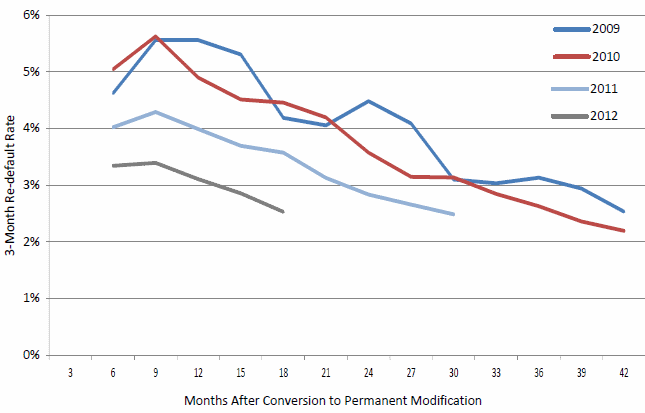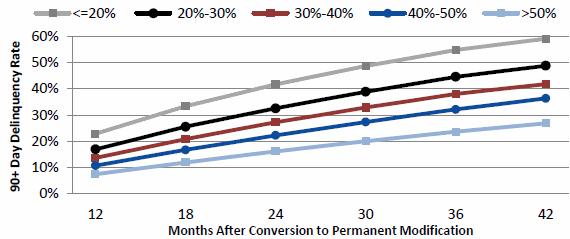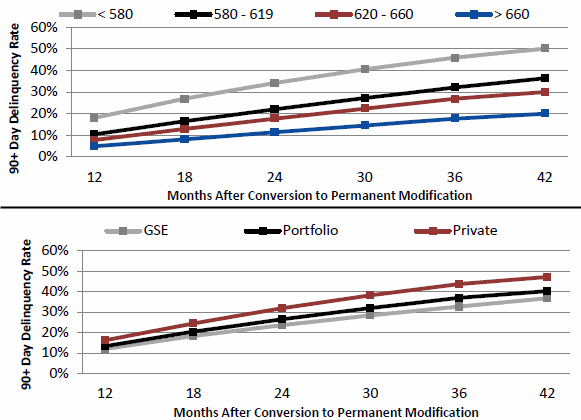Homeowners have saved an estimated $22.9 Billion in mortgage payments through the Home Affordable Modification Program (HAMP) since it began in 2009. The monthly report from the Making Home Affordable (MHA) program, the umbrella under which HAMP and a handful of other foreclosure prevention programs operate, said that, as of September, the median savings on first lien payments for distressed homeowners in the program was $547 per month.
While homeowners with mortgages owned or guaranteed by Fannie Mae or Freddie Mac (the GSEs) are not eligible for any form of principal reduction, HAMP reductions for other investor owned loans have totaled $12.1 billion over the years of the housing crisis. Seventy-two percent of non-GSE loans receiving modifications in September included a principal reduction feature.
MHA said that the performance of HAMP modifications has improved over time. Of modifications that have seasoned 24 months those started in 2011 have had a disqualification rate of 24.3 percent compared to 28.6 percent a month those started in 2009. The longer a homeowner stays in the HAMP program the more likely he or she is to keep up with their mortgage payments as well. MHA cited a report from the Office of Comptroller of the Currency (OCC) saying that HAMP modifications continue to exhibit lower delinquency and re-default rates than industry modifications although no substantiating figures from the OCC report were provided by MHA.

Principal reduction remains a strong factor in the sustainability of loan modifications. For example, of modifications with a monthly payment reduction over 50 percent have a disqualification rate of 16.2 percent at 24 months while those with a payment reduction below 20 percent re-defaulted at a rate of 41.7 percent.

Early intervention is also an important driver of modification success. Borrowers who were 31 to 90 days in arrears on their mortgages at the start of their HAMP trial period experienced a re-default rate over the next 24 months of 24.9 percent. Borrowers whose delinquency was between 121 and 210 days at trial start defaulted at a rate of 31.3 percent.

GSE loans performed better than other HAMP eligible loans while investor owned loans had the poorest performance. MHA also found that the higher the borrower's credit score was at modification the better the loan's subsequent performance.

In the August to September reporting period there were 20,655 permanent modifications initiated through the HAMP program, bringing the total since the program began to 1.44 million. The 2MP Modification Program which works to modify or eliminate junior liens of HAMP eligible borrowers started 2,444 modifications in September for a program total of 119,925. The Home Affordable Foreclosure Alternatives Program assisted 11,816 homeowners through short sales and deeds in lieu for a total of 226,435, and the Unemployment Program (UP) raised its total served to 35,729 with 625 new participants.
The MHA Report is included by reference in the Housing Scorecard issued monthly by the Departments of Housing and Urban Development and Treasury. The Scorecard is a summary of housing related activity for the month including home sales, home price trends, home building, and foreclosure related activity. This information was reported by MND when originally published.







